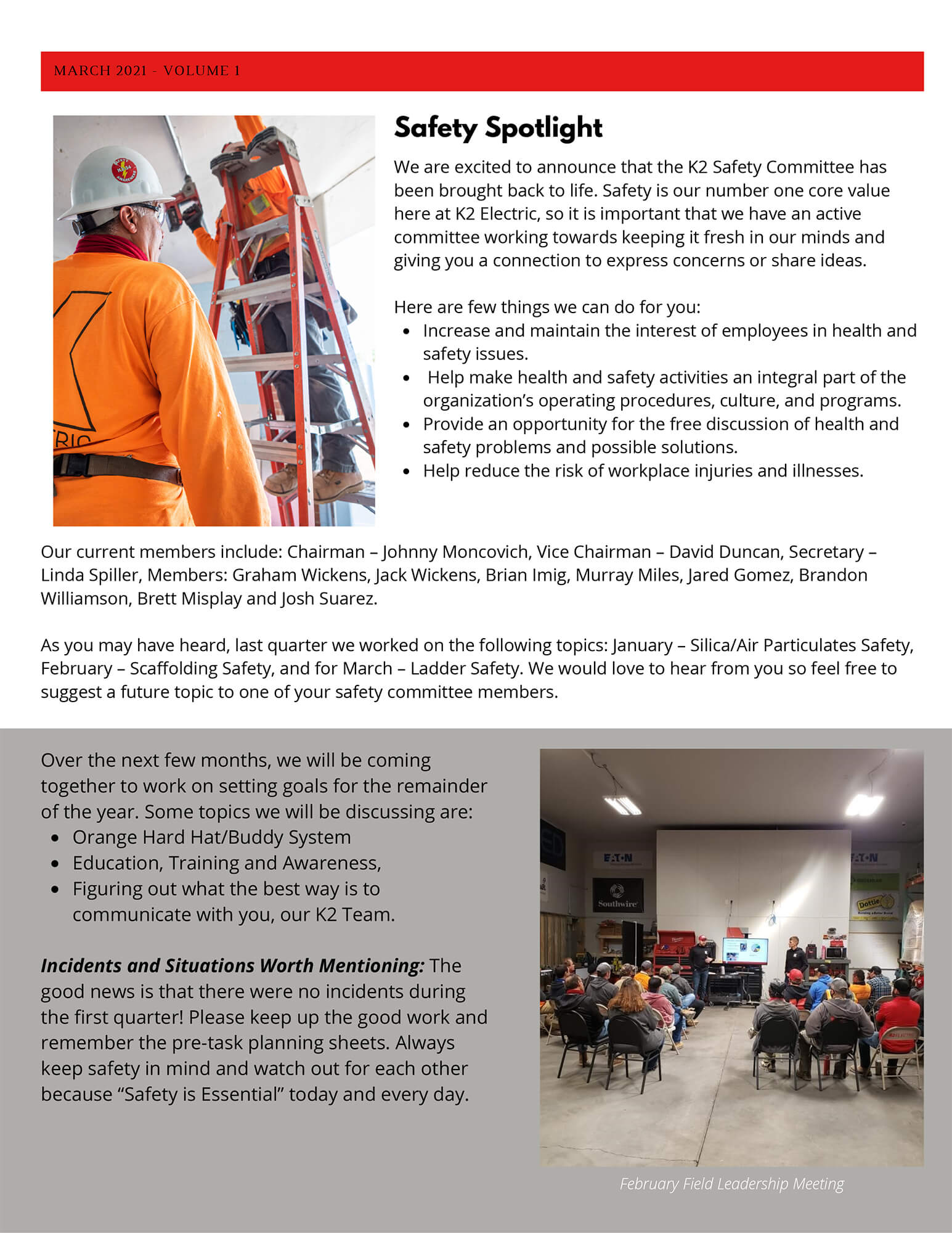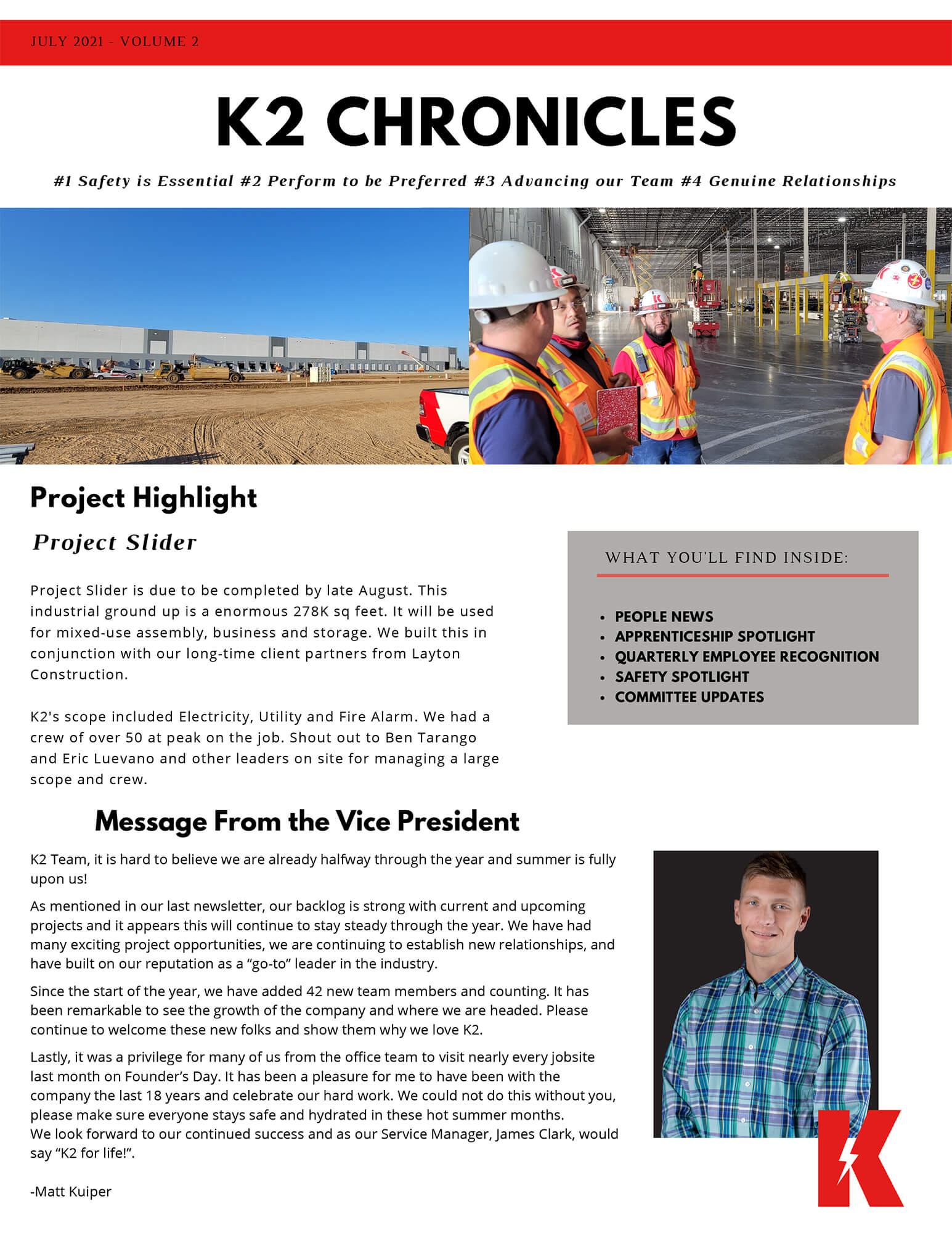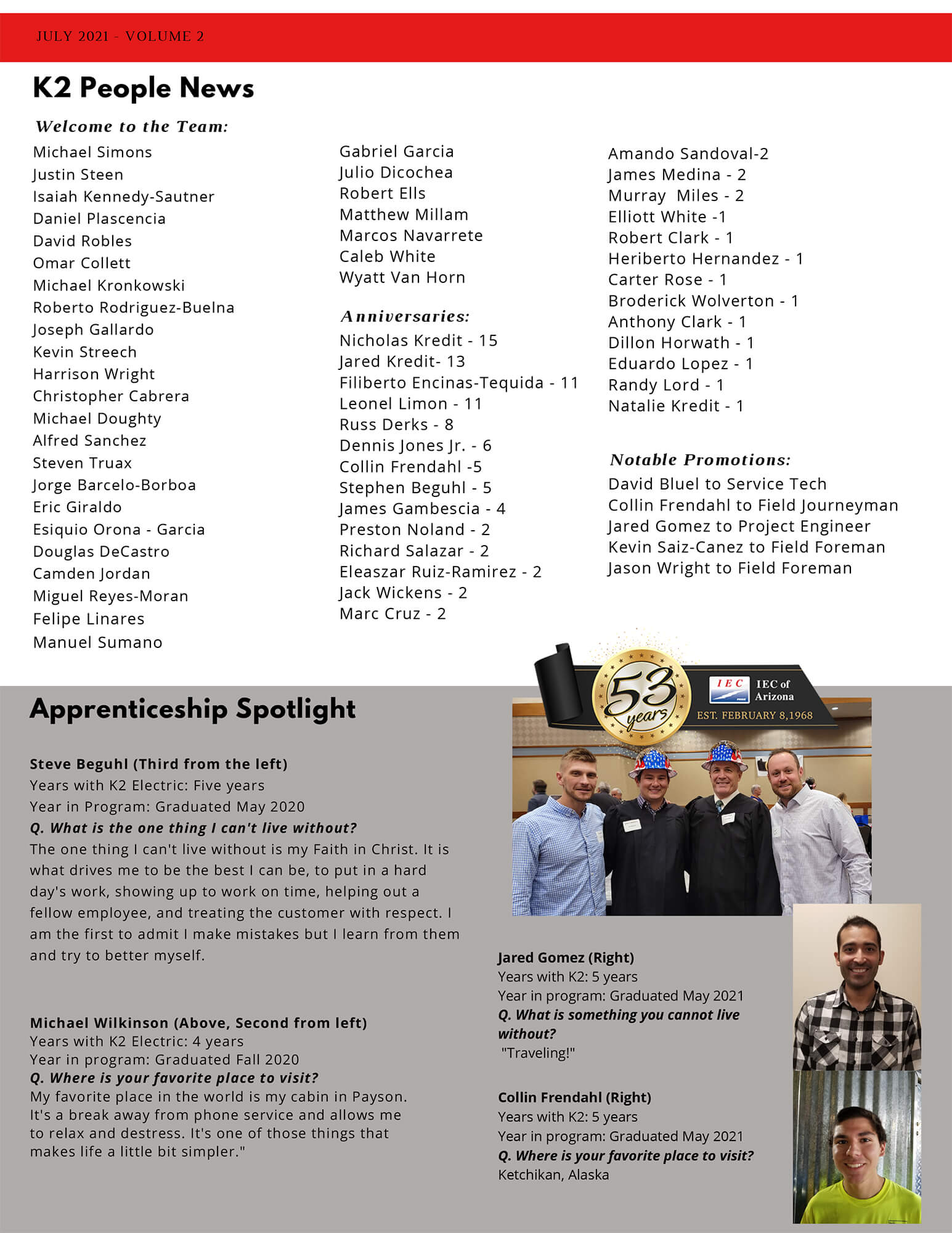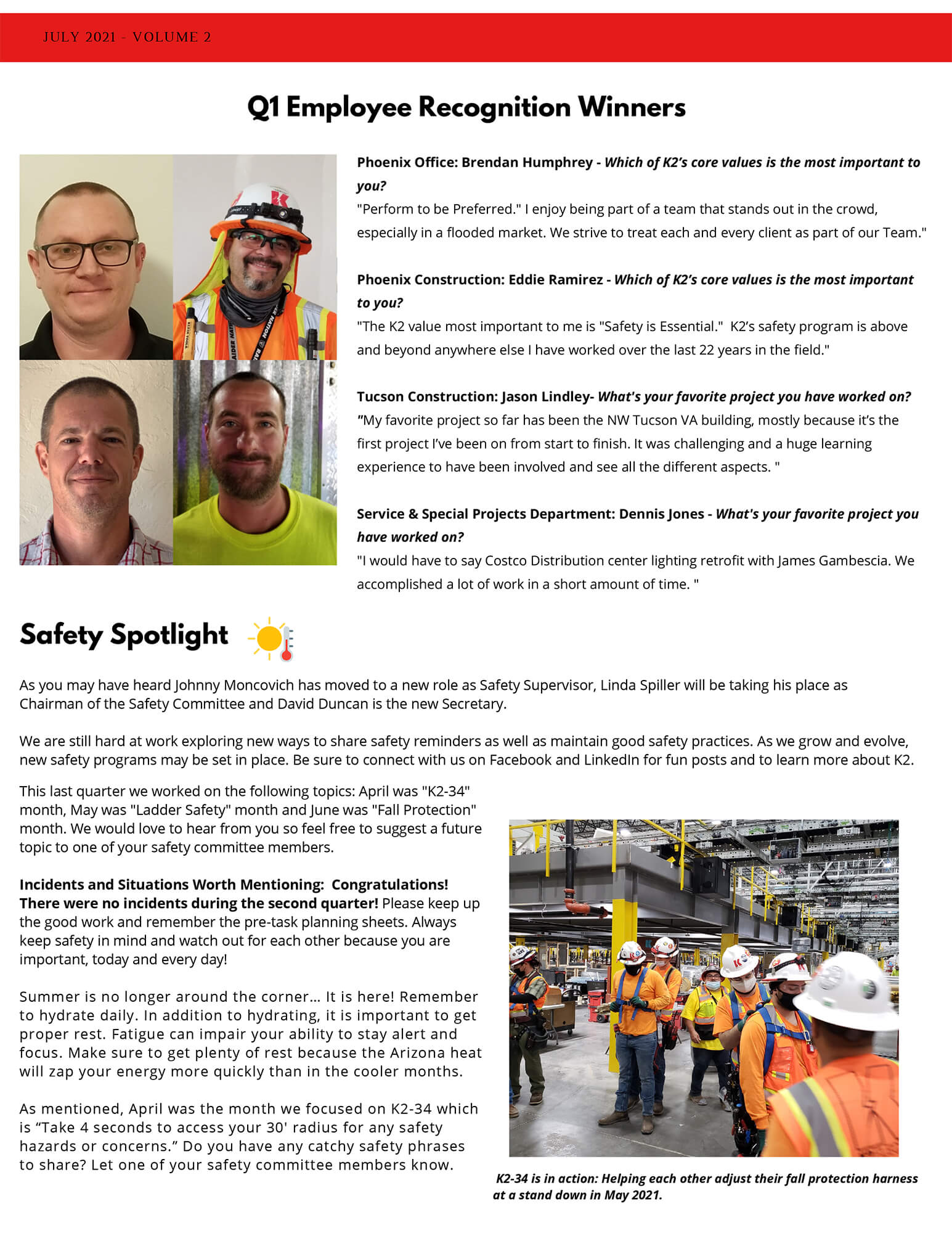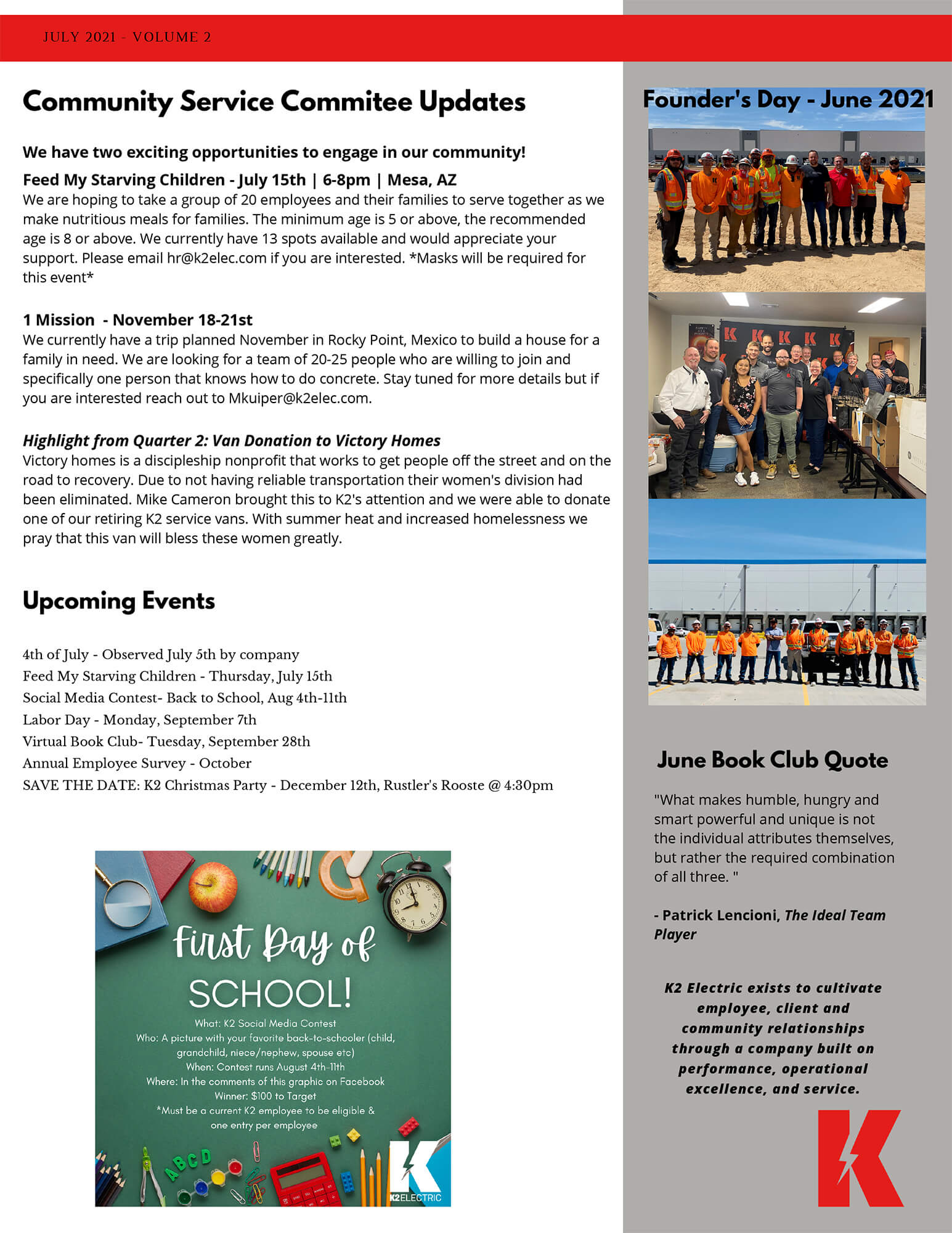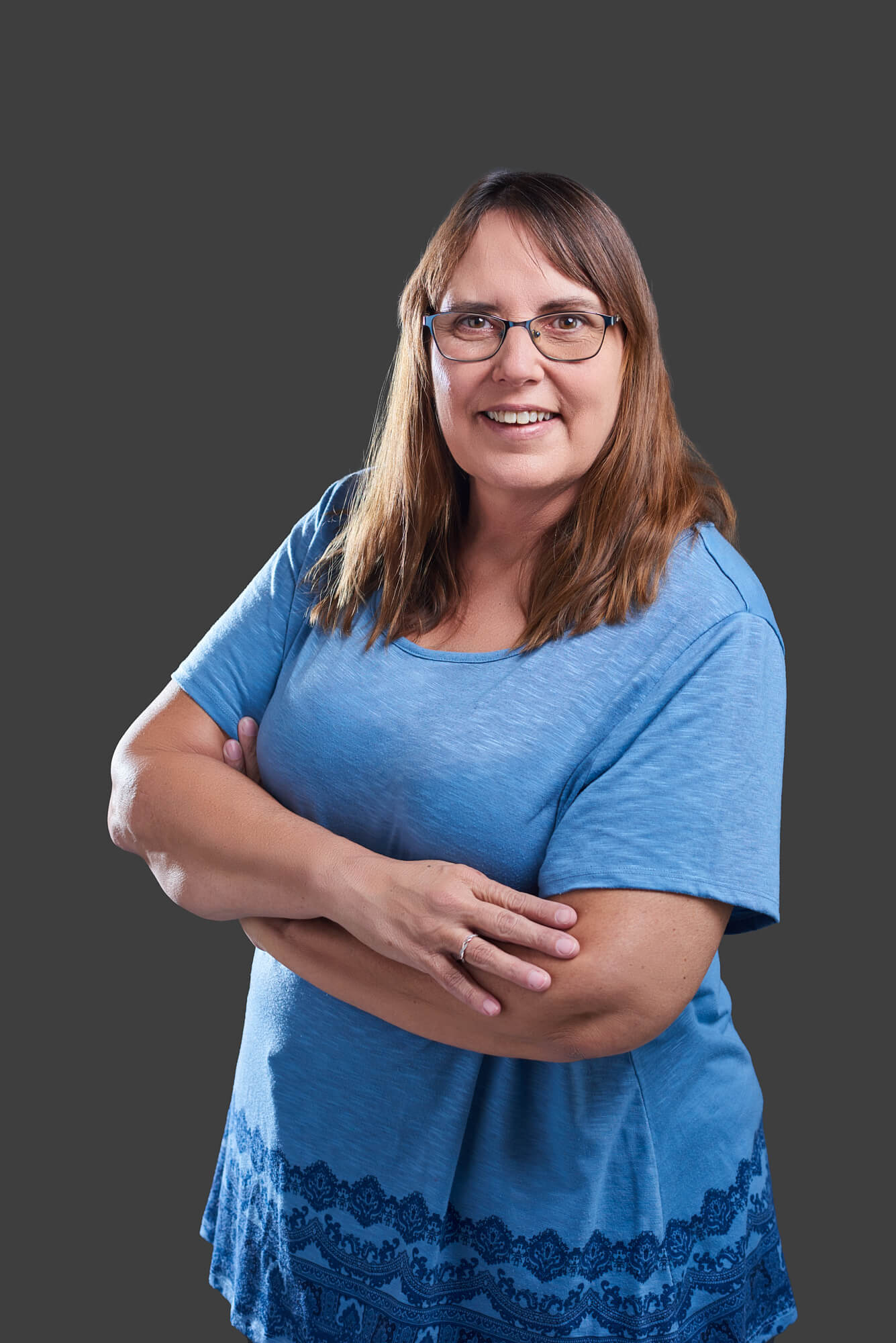Developing Team Members in a Competitive Market
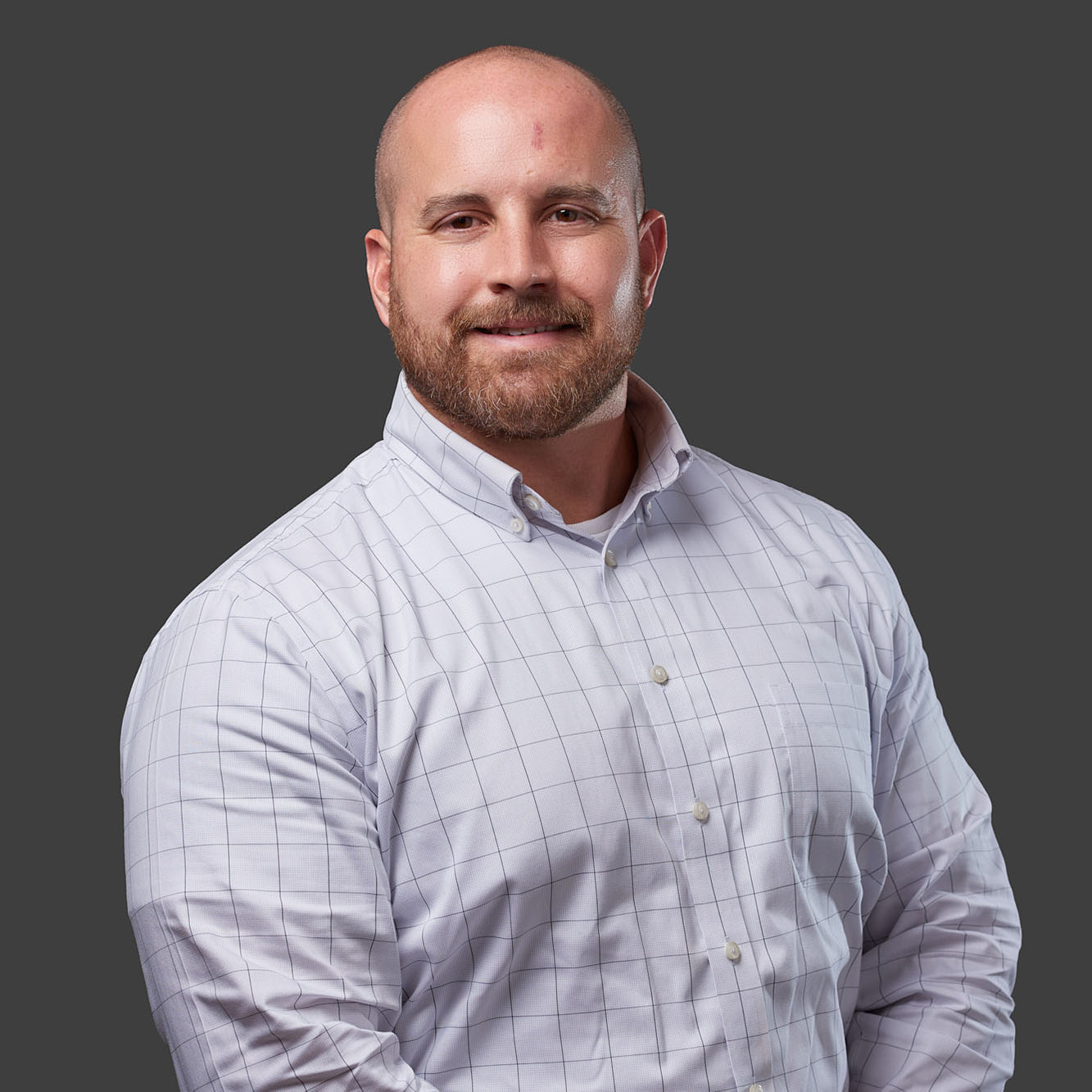
If you were to research, “Common reasons employees leave their jobs”, you will find the following two reasons on every list:
- Lack of professional development
- Lack of job growth/career advancement
And that’s just from the employee’s perspective. On the other side of the coin – the employer side – those who fail to create a culture of learning, development, job growth, and career advancement tend to struggle with employee retention, employee engagement, talent acquisition, and market competitiveness.
With competition at an all-time high, employers cannot afford to skip focus on building a culture around professional development when it comes to attracting and retaining top talent and obtaining new work.
K2 has put an emphasis on developing its people since it was founded in 2003; but the company realizes the constant need to be transformational and ensure employees are kept on par with the evolving times and changing dynamics of the electrical contracting industry. K2 understands that if focus is lost on employee professional development, employees will leave for employers who do invest the time and money into developing them in accordance with their goals.
Employers must remain focused on this to stay relevant in the market and industry.
A few of the programs K2 has developed are as follows:
- Effective Personal Productivity (EPP) Program – All K2 professional staff and newly promoted foreman attend this program which focuses on personal productivity and staying organized through planning and goal setting/achievement.
- Effective Leadership Development (ELD) Program – For K2 leadership roles, staff in this program focus on the art of delegation, understanding motivation, and effective communication to help mentor the next generation of K2 leaders.
- Field Leadership Development Program (FLDP) – This is a program dedicated to focusing on “growing our own” talent in-house specifically designed for up-and-coming electricians which helps prepare them for field leadership as a foreman.
- Apprenticeship Program – K2 partners with IECA and WECA to put employees through electrical trade school while paying for their tuition.
K2 Electric will continue moving forward by living out one of our main core values, Advancing Our Team, so that our employees gain confidence, both personally and professionally, and remain well-equipped to serve the needs of our clients and customers.



